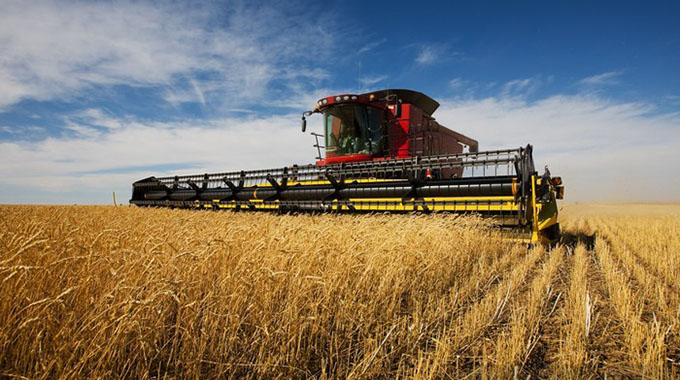
Herald Reporter
The largest-ever wheat crop planted in Zimbabwe is generally in good condition and growing well, with farmers expecting a good harvest, thanks to Zesa’s uninterrupted power supply allowing continuous irrigation.
Farmers are following their irrigation schedules seamlessly, with only a few being affected by power cuts owing to electrical faults.
Despite recent droughts, there is enough water available for the 80 000ha planned.
Government has committed to supporting 65 000 hectares of the national wheat target, with the private sector funding the remaining 15 000 hectares.
The 80 000 hectares are expected to produce 415 000 tonnes, and for the first time ever will make Zimbabwe self-sufficient in wheat and flour.
Zimbabwe imported wheat and flour up to Unilateral Declaration of Independence in 1965, but the illegal regime started growing wheat under irrigation in winter, avoiding the disease problems that had made it impossible before, and that continued after independence.
But the country has never been close to self-sufficiency and in recent years harvests were lower as a result of frequent power cuts.
Farmers had over the years been reluctant to grow wheat because of the high risk associated with the crop.
Use of generators drive up costs and makes the crop unviable and with inadequate irrigation, yields plummet.
Agritex wheat expert, Mr Robson Chihumba, yesterday said the condition of the both the early and late planted wheat was good in most areas.
But the planting window had already passed and it was not advisable for farmers to continue planting as the wheat will be affected by diseases and early rains.
Although the national dam levels are low, there is enough water available to see the wheat through to maturity.
“There are some specific farms where water is critically low and there is need to pump water from dams so farmers can continue irrigating their wheat,” said Mr Chihumba.
Indigenous Commercial Farmers Union president, Mrs Mayiwepi Jiti confirmed that this winter cropping season was better compared to the previous years.
